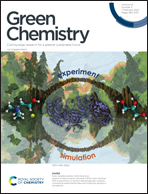Glyme-based electrolytes: suitable solutions for next-generation lithium batteries
Abstract
The concept of green in a battery involves the chemical nature of electrodes and electrolytes as well as the economic sustainability of the cell. Although these aspects are typically discussed separately, they are deeply interconnected: indeed, a new electrolyte can allow the use of different cathodes with higher energy, lower cost or more pronounced environmental compatibility. In this respect, we focus on an alternative class of electrolyte solutions for lithium batteries formed by dissolving LiX salts in glyme solvents, i.e., organic ethers with the molecular formula CH3O[CH2CH2O]nCH3 differing by chain length. The advantages of these electrolytes with respect to the state-of-the-art ones are initially illustrated in terms of flammability, stability, toxicity, environmental compatibility, cell performances and economic impact. A particular light is shed on the stability of these systems, particularly in the polymer state, and in various environments including oxygen, sulfur and high-energy lithium metal. Subsequently, the most relevant studies on the chemical–physical features, characteristic structures, favorable properties, and electrochemical behavior of glyme-based solutions are discussed, and the most recent technological achievements in terms of cell design and battery performance are described. In the final sections, the use of glyme-based electrolytes in high-energy cells arranged by coupling a lithium-metal anode with conventional insertion cathodes as well as in alternative and new batteries exploiting the Li–S and Li–O2 conversion processes is described in detail. The various paragraphs actually reveal the advantages, including safety, low cost and sustainability, which can be achieved by employing the glyme-based electrolytes with respect to the commercially available ones, in particular taking into account future and alternative applications. Particular relevance is given to the glymes with long chains that show remarkable stability, high safety and very low toxicity. Therefore, this review is expected to shed light on the potentialities, the actual advantages compared to the state-of-the-art batteries, and the possible applications of electrolytes based on glyme solvents in next-generation energy storage systems.

- This article is part of the themed collections: Energy Frontiers: Electrochemistry and Electrochemical Engineering, Green Chemistry Reviews and Green Chemistry Reviews


 Please wait while we load your content...
Please wait while we load your content...